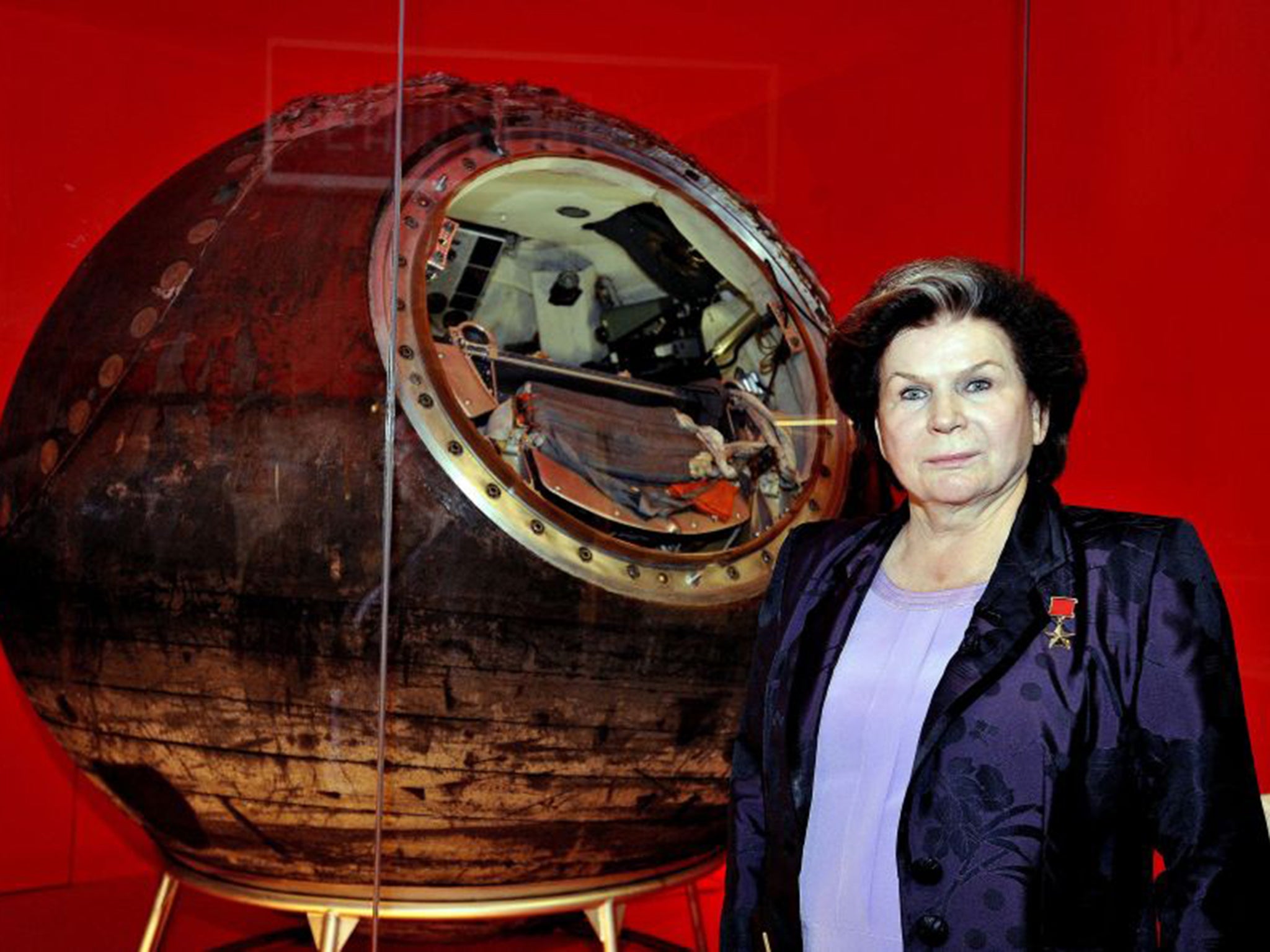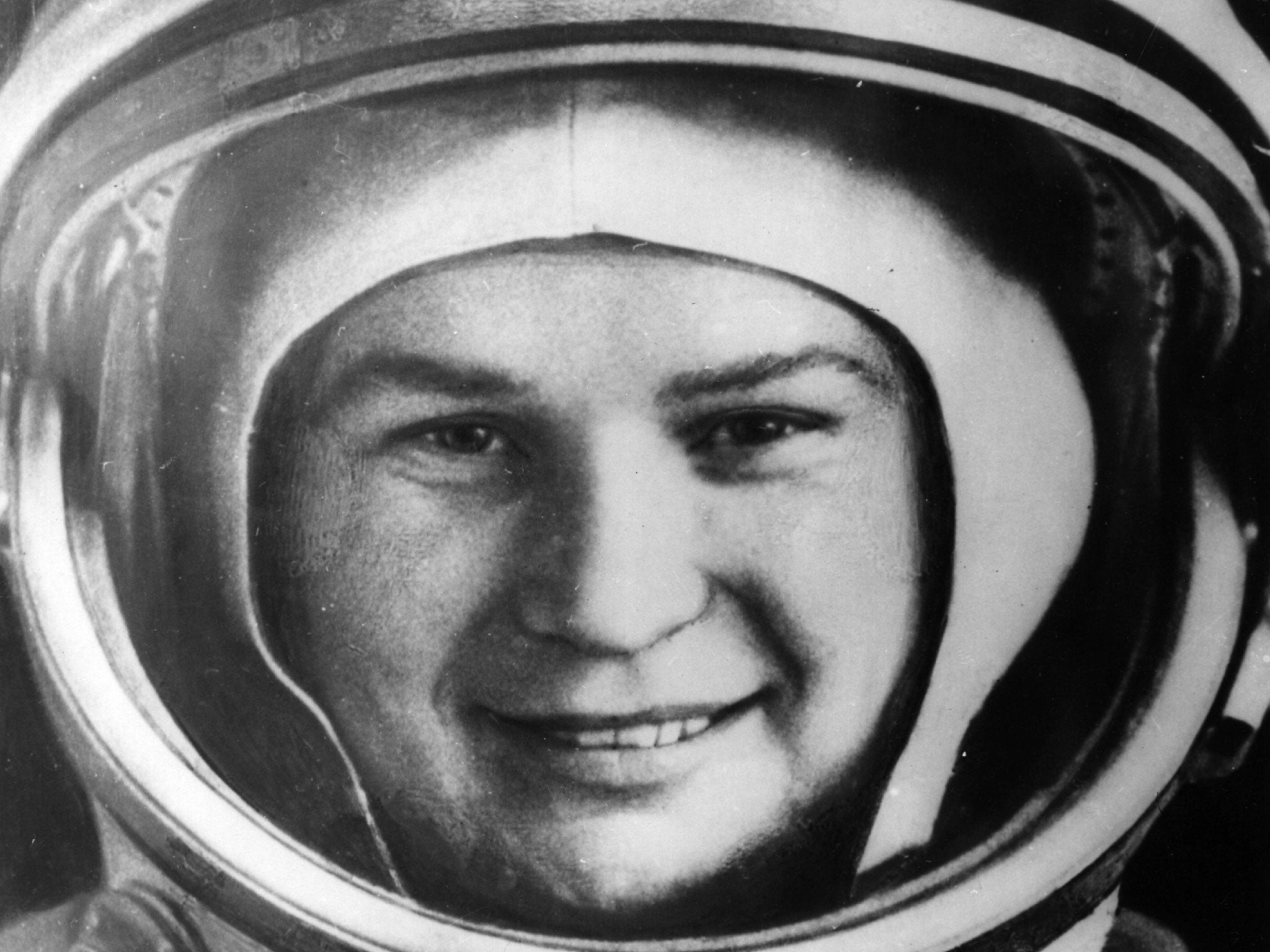First woman in space reveals what crucial piece of kit was missing on her 1963 mission
Mission control forgot to pack a toothbrush for Valentina Tereshkova's voyage

Your support helps us to tell the story
From reproductive rights to climate change to Big Tech, The Independent is on the ground when the story is developing. Whether it's investigating the financials of Elon Musk's pro-Trump PAC or producing our latest documentary, 'The A Word', which shines a light on the American women fighting for reproductive rights, we know how important it is to parse out the facts from the messaging.
At such a critical moment in US history, we need reporters on the ground. Your donation allows us to keep sending journalists to speak to both sides of the story.
The Independent is trusted by Americans across the entire political spectrum. And unlike many other quality news outlets, we choose not to lock Americans out of our reporting and analysis with paywalls. We believe quality journalism should be available to everyone, paid for by those who can afford it.
Your support makes all the difference.To send a woman into space for the first time in the 1960s, the Russians spent months perfecting the design of the craft and selecting the right candidate out of hundreds of applicants. They forgot to pack one vital piece of kit though: a toothbrush for the pioneering cosmonaut.
Valentina Tereshkova revealed she had to clean her teeth with her fingers during the three-day mission in the Vostok-6 spacecraft in 1963, after mission control bungled her packing.
“Unfortunately it is a fact,” the 78-year-old said at the opening of an exhibition exploring the then Soviet Union’s ground-breaking space programme. “But I was resourceful, as any woman would be... I had my hands and water.”

At Cosmonauts: Birth of the Space Age at the Science Museum, Dr Tereshkova called the 2.6 ton craft, which shows the scorch marks from its 16,750mph re-entry into the Earth’s atmosphere, “my best and most beautiful friend”. It was brought from the Russian cosmonaut training school at Star City, near Moscow, to star in the London show.
She revealed the mission almost ended in disaster after engineers had wrongly configured the craft for re-entry, and she had to call ground control to correct the error. Compared to that, “forgetting the toothbrush was nothing,” she said.
The history of Russia’s space programme has often been underplayed in the West, but it kick-started the space age when it became the first to launch an artificial satellite – Sputnik in 1957 – then the first animal, man and woman into space all within six years.
It would be two decades before America launched a woman, Sally Ride, into space and Dr Tereshkova remains the only woman to have flown a solo mission into space.
Most of the 150 exhibits have never been seen outside of Russia, and some even had to be de-classified by the government. Despite current frosty political relations between the UK and Russia, Dr Tereshkova said holding the exhibition in London was “very symbolic as it shows how good the co-operation between British and Russian scientists is. Of course we would like it to be even broader and deeper”.
Also present was Sergei Krikalev, a veteran cosmonaut of six space flights who until recently held the record for the longest time in space: 803 days 9 hours 39 minutes.
The exhibits include the five-metre tall LK-3 lunar lander built in 1969 designed to take a cosmonaut to the moon. It was kept secret until 1989.
Science Museum director Ian Blatchford said it was one of the biggest ever exhibitions at the institution and political relations between the nations had made it challenging.
“It was very complicated,” he said. “There were many dark days when we thought politically and logistically it wouldn’t happen.”
Join our commenting forum
Join thought-provoking conversations, follow other Independent readers and see their replies
Comments